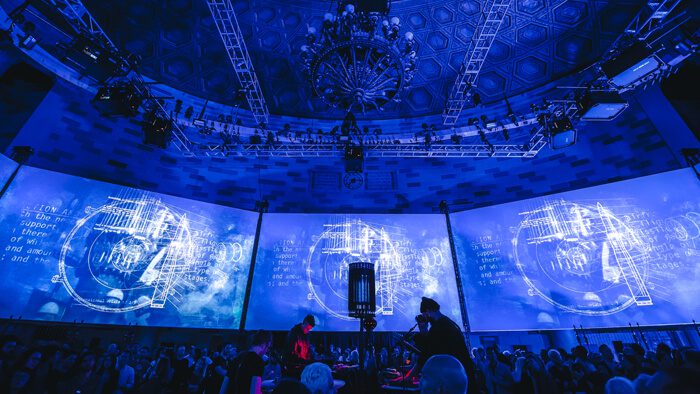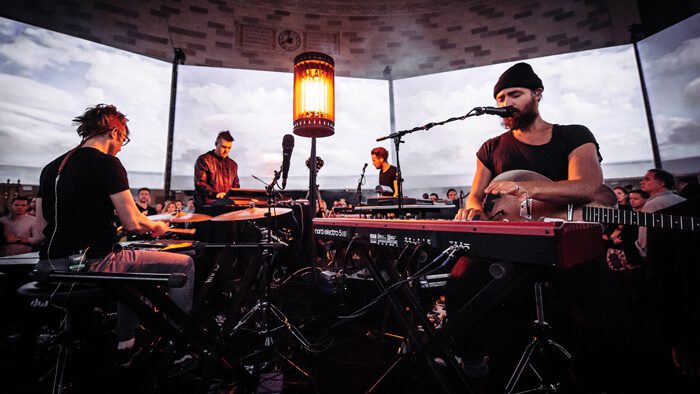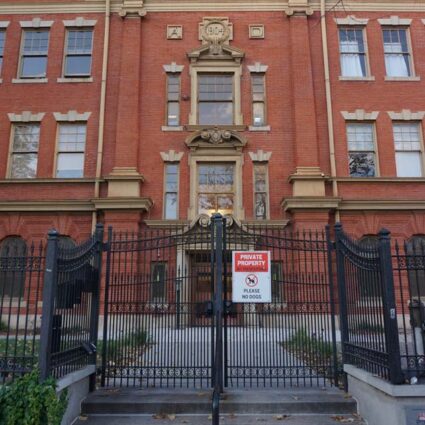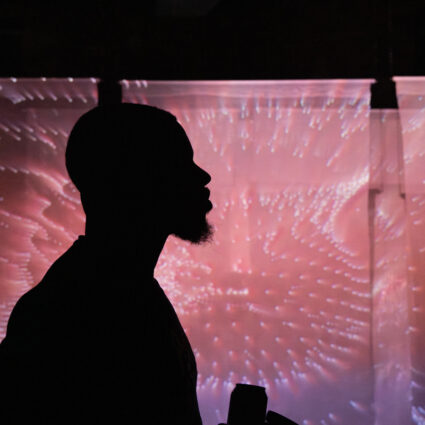
Smriti Keshari is an Indian-American award-winning filmmaker, artist, and director. Her work explores untold stories beyond mainstream media. Her approach is interdisciplinary and deeply collaborative, bringing together artists, actors, musicians, scientists, writers, activists, and other creative minds to push beyond traditional constraints of filmmaking.
I first met Smriti in Los Angeles to preview her extraordinary collaborative film/music/art installation the bomb. The bomb is an immersive multimedia experience that the New York Observer describes as “an abstract wonder and a literal nightmare: a dazzling view into the abyss.” The sixty-one-minute video installation places the viewer in the center of archival footage, animation, music, text, and live music performed by the band The Acid. The bomb debuted at the Tribeca Film Festival in October, 2017, has since premiered internationally at the Berlin Film Festival, and was featured at the 2017 Glastonbury Festival. It’s available to be viewed on Netflix. In 2018, it is embarking on a global tour starting in Sydney. Here are three questions for Smriti Keshari.
1
Originally from India, you grew up in Puerto Rico, traveled throughout Australia, produced a surfing series in India, produced the extraordinary documentary Food Chains, examining social injustices impacting American farmworkers, and now the bomb. Your interests, travels, and experiences are sweeping, your projects seemingly disparate. Can you speak to what most inspires you, why you are drawn to travel and adventure, and how that informs the stories you tell?
I recently spent some time in Liverpool and was telling a friend about how I typically need to be in an airplane and on the road to obtain clarity. On the road comes naturally to me.
When we’re on the road or in nature, there’s a lot of waiting and pondering: you just sit there. What we’re really doing is just switching off various kinds of alertness that we don’t have to use. We stop being active or even defensive. We just welcome different types of experiences, and in that there are hidden things you’re drawn to discover.
2
My experience of the bomb at the Tribeca Film Festival was vertiginous, uncomfortable, and deeply moving. The room was crowded with people, and the range of reactions was vast: tears, embraces, awe, stunned silence. Someone near me was physically ill. The bomb provoked a far more profound response than a lecture or a public service announcement could ever conceivably elicit. Why was it important for the viewer to be in the center of this experience, rather than just a passive viewer? Why do you think the arts are an important vehicle to address urgent global issues?
For some time, I had been thinking about putting people inside of a film, challenging the one-way, one-directional experience of viewing. Whether it’s a film, a theatre performance, or a live music show, these are always projected at you. But what if you were in the center of the story? How would your perception of it be different, by changing the way you experience it?
Around this time I was reading Command and Control [Command and Control: Nuclear Weapons, the Damascus Accident, and the Illusion of Safety, by Eric Schlosser, 2013], and it had a profound effect on me. It became evident to me that we’re living under this most awful nuclear cloud, in a world with roughly fifteen thousand nuclear weapons. Yet there’s a complete ignorance of them. These weapons are buried underground; they are out of sight and out of consciousness.
it’s really hard for an individual to have an emotional connection to something that they can’t see or feel. I really wanted to create a deeper, visceral experience of nuclear weapons, so people could feel the gravity and reality of living with these weapons.
The idea of nuclear war is abstract and unfathomable. The human imagination is incapable of encompassing all the psychological variants of this reality. And it’s really hard for an individual to have an emotional connection to something that they can’t see or feel. I really wanted to create a deeper, visceral experience of nuclear weapons, so people could feel the gravity and reality of living with these weapons.
There’s an entire system—processes, timing, reasoning—that led us to this reality. In order to understand how we’ve gotten to this reality, we must first recognize the emotions nuclear weapons evoke—their allure, their beauty, their construct, and the ultimate death wish at the heart of them. The bomb was made to deliberately ignite an emotional and visceral understanding of the nuclear reality we are living in right now. Eric and I brought together the experimental spirit of Kevin Ford, the bold and political art of Stanley Donwood, the technological and visceral viewing ethos of United Visual Artists (UVA), and fused it all together with the haunting live soundtrack by The Acid.

3
Having The Acid perform live during the installation unquestionably increased the immediacy and intensity of my experience as a viewer. My entire body vibrated to haunting and powerful instruments and vocals in real-time response to the images that engulfed me. How did you come to work with The Acid? Can you speak a bit more about your choice to use such an interdisciplinarThey, collaborative creative approach for this project?
Adam Freeland and I had met many moons ago through a mutual friend who had suggested I check out The Acid’s album, Liminal, when Eric and I were discussing the different sounds for the bomb.
Through a powerful underlying simplicity, The Acid propel the listener into an emotional journey. In early creative conversations with Adam while hiking in Griffith Park, he often spoke of the art of a good DJ set in terms of building and releasing tension and then building again. The Acid are adept at creating space, magnitude, and depth by holding back where others might want to go bigger.
Silence was certainly a favorite topic of mine that we discussed. Silence can sometimes be viewed as the antithesis of sound, but silence needs to exist for one to experience sound. It consists of it: you need one to experience the other. Kind of like dark matter in the universe. So we would often debate what silence sounds like.
each entity of the experience, from the film to the animation to the music and the multi-screen configuration, follows a slow seduction, then a build and a climax
As a filmmaker, before thinking of any scene, I often think first of the music and sounds that would help convey the emotion. In the process of making the film and the original score, we often spoke about how nuclear weapons tapped into different emotions—of adrenaline, of fear, of celebration, of chaos, of sadness, etc.—and how the music can heighten those feelings.
In a sense, each aspect of the film inspired the others. There’s a moment during the bomb where we focus on the seduction of the machine—each entity of the experience, from the film to the animation to the music and the multi-screen configuration, follows a slow seduction, then a build and a climax—ending in almost a euphoric hallucination with the nuclear weapon at the center of it.
One more thing… Who do you think is doing the most innovative, interesting, disruptive work right now and why?
I recently saw Trevor Paglen’s exhibition, A Study on Invisible Images, on the vision of machines. Trevor’s piece focuses on the visual culture and process of machines: how an algorithm or an A.I. “sees.” I’m creating a new project on artificial intelligence, and the subject matter is quite complex, because at the heart of A.I., you’re defining intelligence, which is, in itself, an endless pursuit. Trevor’s approach is quite simple, yet revelatory.
Also, I’ve been listening to Nordic Affect, an Icelandic group that combines classical and new music—violin, viola, cello, and electronics—and has a rhythmical repetition. It sounds like you’ve stepped inside a giant clock: it’s calming, yet quite gothic.



